Buildings in Oradour-sur-Glane
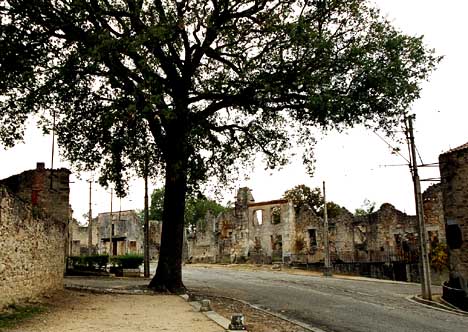
The photo above shows the burned-out
shells of the buildings in the lower town. The church is behind
the camera in this view. On the right is the intersection of
the main street with the road to Les Bordes. The oak tree was
planted in 1848.
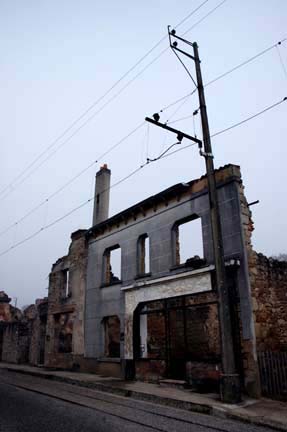
I spent three days in Oradour-sur-Glane
in October 2004, photographing the ruins. The weather and the
lighting on the ruins changed daily and even hourly, as indicated
by the different moods of the photos on this web site. The photo
above shows a relatively modern building with a facade constructed
out of clay, in a village where most of the buildings are made
of granite or brick.
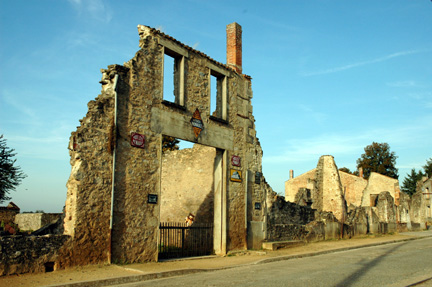
The photo above shows a garage, built
out of granite, located on the main street of the village; this
photo was taken on a hot afternoon when the weather was like
it must have been on the day of the massacre.
Over time, the buildings in the ruins
have been washed clean of the smoke from the fire that destroyed
the village. The ruins have taken on a softer, romantic look,
which was not the intent in preserving the village for future
generations. The impact of what happened here does not immediately
hit you. The village was already old to begin with, and now 60
years later, it is a ghost town which gives visitors a glimpse
of the past but does not convey the horror of the tragedy.
Some people have suggested that the village
should have been rebuilt. Many of the houses suffered very little
damage, as the photo below shows. It was taken in the Upper Town
at the northern end of the main street. The building on the far
right in the photo below is the post office which is also relatively
undamaged.
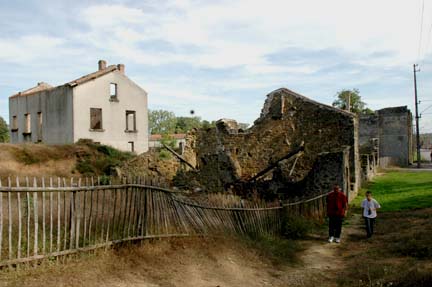
Sarah Farmer, in her book "Martyred
Village," quotes the following from one of the survivors,
Marcel Darthout, who was still alive, as of June 10, 2004:
"I think that the ruins have to
be kept...It's necessary. But they are going to evolve. I'm afraid
of that. I'm afraid they're changing. On the one hand they're
going to fall down, they're going to collapse - or it will be
necessary to put in a lot of money to protect them. What they're
going to become, I don't know. Will they become in a few years
like what one sees at the ruins of a chateau or for that matter
a fortress?...Are they going to become like that? I wouldn't
want that. That's the goal of the Association, not to forget.
That the ruins don't become lifeless. One would like to make
them - to make them live again. It's awful."
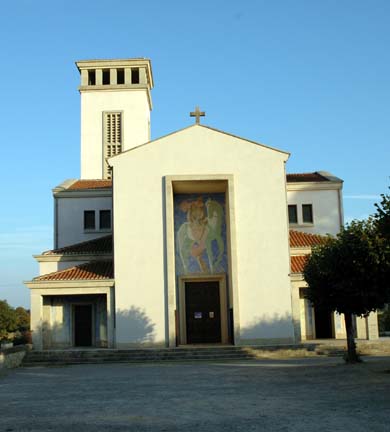
The photo above shows the church in the
new town of Oradour-sur-Glane. This is the front of the church
which faces the town; the back of the church faces the Center
of Memory and is visible from the ruins. The main street of the
new town, which goes past the church, is called "Tenth of
June" steet in rembrance of the date of the destruction
of the old town.
|